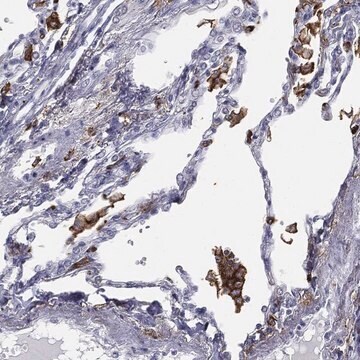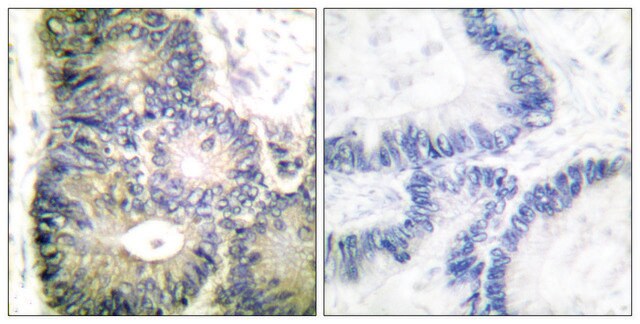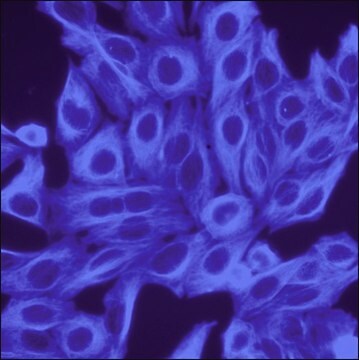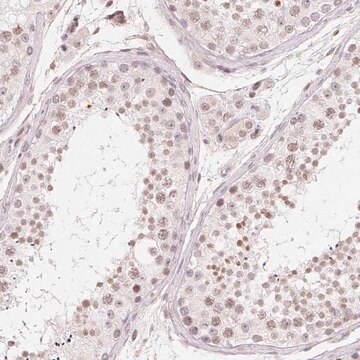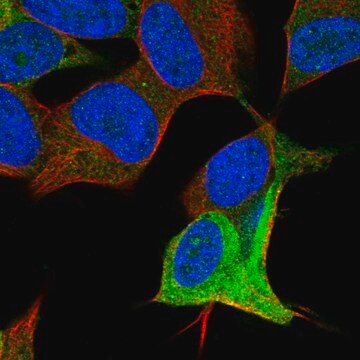SAB4200631
Monoclonal Anti-CYBA antibody produced in mouse
clone CB-64, purified from hybridoma cell culture
Synonym(e):
Cytochrome b558 subunit alpha, Neutrophil cytochrome b 22 kDa polypeptide, Superoxide-generating NADPH oxidase light chain subunit, cytochrome b-245 alpha polypeptide, p22-PHOX
About This Item
Empfohlene Produkte
Biologische Quelle
mouse
Qualitätsniveau
Antikörperform
purified immunoglobulin
Antikörper-Produkttyp
primary antibodies
Klon
CB-64, monoclonal
Form
buffered aqueous solution
Speziesreaktivität
bovine, mouse, rat, monkey, human, canine
Konzentration
~1 mg/mL
Methode(n)
flow cytometry: 5-10 μg/test using HeLa cells.
immunoblotting: 0.5-1 μg/mL using whole extracts of HeLa cells.
immunofluorescence: 5-10 μg/mL using HeLa cells.
Isotyp
IgM
UniProt-Hinterlegungsnummer
Versandbedingung
dry ice
Lagertemp.
−20°C
Posttranslationale Modifikation Target
unmodified
Angaben zum Gen
human ... CYBA(1535)
mouse ... Cyba(13057)
rat ... Cyba(79129)
Allgemeine Beschreibung
Immunogen
Anwendung
- immunoblotting
- flow cytometry
- immunofluorescence
Biochem./physiol. Wirkung
Physikalische Form
Haftungsausschluss
Sie haben nicht das passende Produkt gefunden?
Probieren Sie unser Produkt-Auswahlhilfe. aus.
Lagerklassenschlüssel
10 - Combustible liquids
WGK
WGK 1
Flammpunkt (°F)
Not applicable
Flammpunkt (°C)
Not applicable
Analysenzertifikate (COA)
Suchen Sie nach Analysenzertifikate (COA), indem Sie die Lot-/Chargennummer des Produkts eingeben. Lot- und Chargennummern sind auf dem Produktetikett hinter den Wörtern ‘Lot’ oder ‘Batch’ (Lot oder Charge) zu finden.
Besitzen Sie dieses Produkt bereits?
In der Dokumentenbibliothek finden Sie die Dokumentation zu den Produkten, die Sie kürzlich erworben haben.
Unser Team von Wissenschaftlern verfügt über Erfahrung in allen Forschungsbereichen einschließlich Life Science, Materialwissenschaften, chemischer Synthese, Chromatographie, Analytik und vielen mehr..
Setzen Sie sich mit dem technischen Dienst in Verbindung.